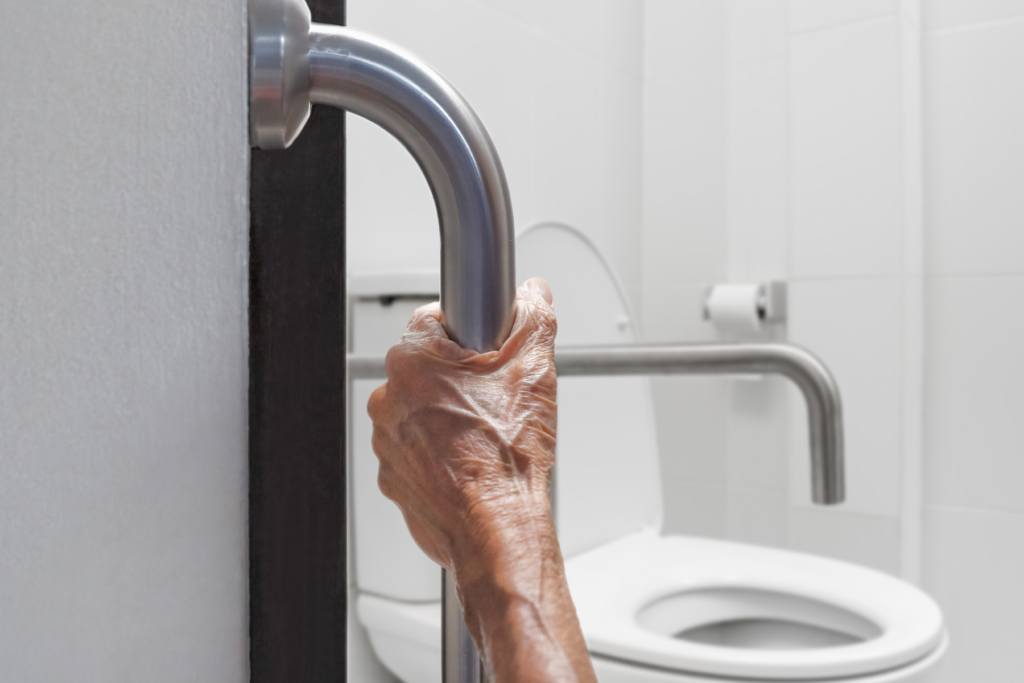Dementia: The Importance of a Bathroom Routine

By Gary Skole
Establishing a bathroom schedule for adults living with dementia is an essential aspect of providing care and support. A cognitive impairment can cause individuals to experience difficulties with going to the bathroom, which can result in accidents, discomfort, and a decrease in overall quality of life. Therefore, establishing a regular bathroom routine can help to minimize these issues and promote the individual’s dignity and independence. In this article, we will discuss the importance of a bathroom schedule and provide some tips on how to establish one for adults living with dementia.
Why is a Bathroom Schedule Important?
As individuals living with dementia progress through the stages of the disease, they may experience difficulty with recognizing the need to use the bathroom or accessing the bathroom on their own. This can lead to accidents, discomfort, and even infections. Additionally, individuals living with dementia may become anxious or agitated if they are unable to find the bathroom when they need to use it. A regular bathroom schedule can help to reduce these issues by providing structure and routine.
Tips for Establishing a Bathroom Schedule
- Observe the individual’s bathroom habits: Before establishing a bathroom schedule, it’s important to observe the individual’s current bathroom habits. This can help you to identify patterns and anticipate when they may need to use the bathroom. It’s also important to note any signs that the individual needs to use the bathroom, such as fidgeting, tugging on their clothes, pacing, or vocalizations.
- Create a schedule: Once you have observed the individual’s bathroom habits, create a schedule that reflects their needs. This may include scheduled trips to the bathroom at regular intervals or based on certain events, such as after meals or before bedtime. Consider every 2 hours.
- Use visual cues: Visual cues can be helpful in reminding individuals living with dementia when it’s time to use the bathroom. This may include using signs or pictures to indicate
the location of the bathroom or placing a clock or timer in the individual’s room to help
them anticipate when it’s time to use the bathroom.
- Provide assistance: Depending on the individual’s level of independence, they may require assistance with bathroom. This may include providing verbal prompts or physical assistance with removing clothing or getting on and off the toilet. It’s important to provide assistance in a respectful and dignified manner. One thing that needs to be considered here is the balance between you doing everything for the individual and allowing them to remain as independent as possible. In an ideal situation, they would continue doing the majority of the work required in order to use the bathroom with you offering the minimal amount of assistance. It is extremely IMPORTANT to always watch for clues that they are getting frustrated or about to have an accident.
- Be flexible: While a regular bathroom schedule is important, it’s also important to be flexible and adapt to the individual’s changing needs. If they are experiencing discomfort or have an urgent need to use the bathroom, it may be necessary to adjust the schedule accordingly.
- Altering the Environment: Sometimes people living with dementia may mistake trash cans, laundry baskets or flower pots as toilets. You may have to remove these items and if getting to the bathroom is physically difficult consider a urinal or a bedside commode.
- Consider using technology and music: Items such as Amazon’s Alexa can be a great tool for reminding a person to use the bathroom. It can be programmed to make an announcement at specific times which help with consistency. Music is a great way to transition a person from one task to another. If you find it is hard to get your loved one motivated to get to the bathroom, put on some of their favorite music and ask them to dance. Once they are up, waltz on over to the bathroom!
Conclusion
Establishing a bathroom schedule for adults living with dementia can help to promote their dignity and independence while reducing the risk of accidents and discomfort. By observing the individual’s bathroom habits, creating a schedule, using visual cues, providing assistance, and being flexible, care partners can help to ensure that the individual’s bathroom needs are met in a respectful and dignified manner.



Responses